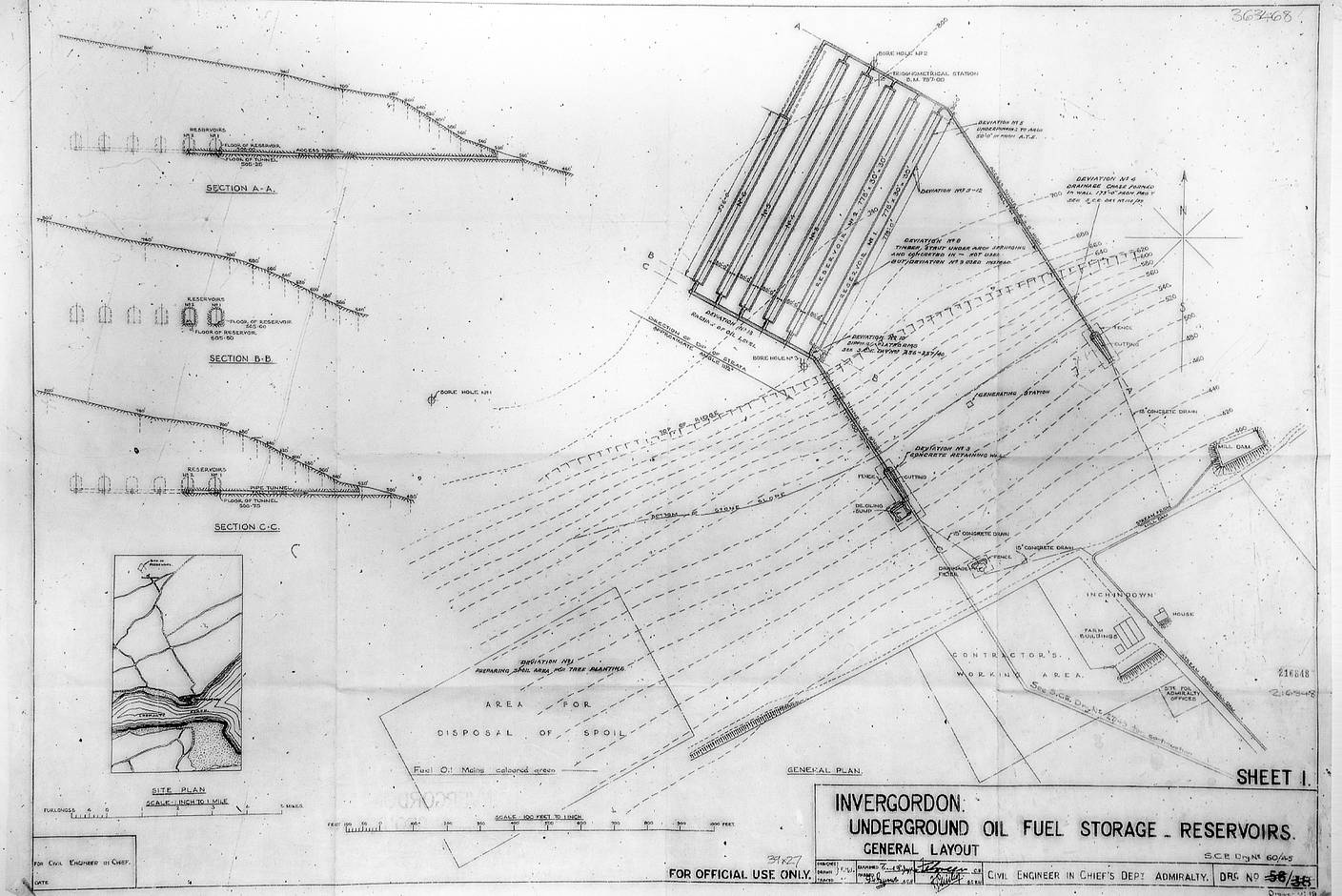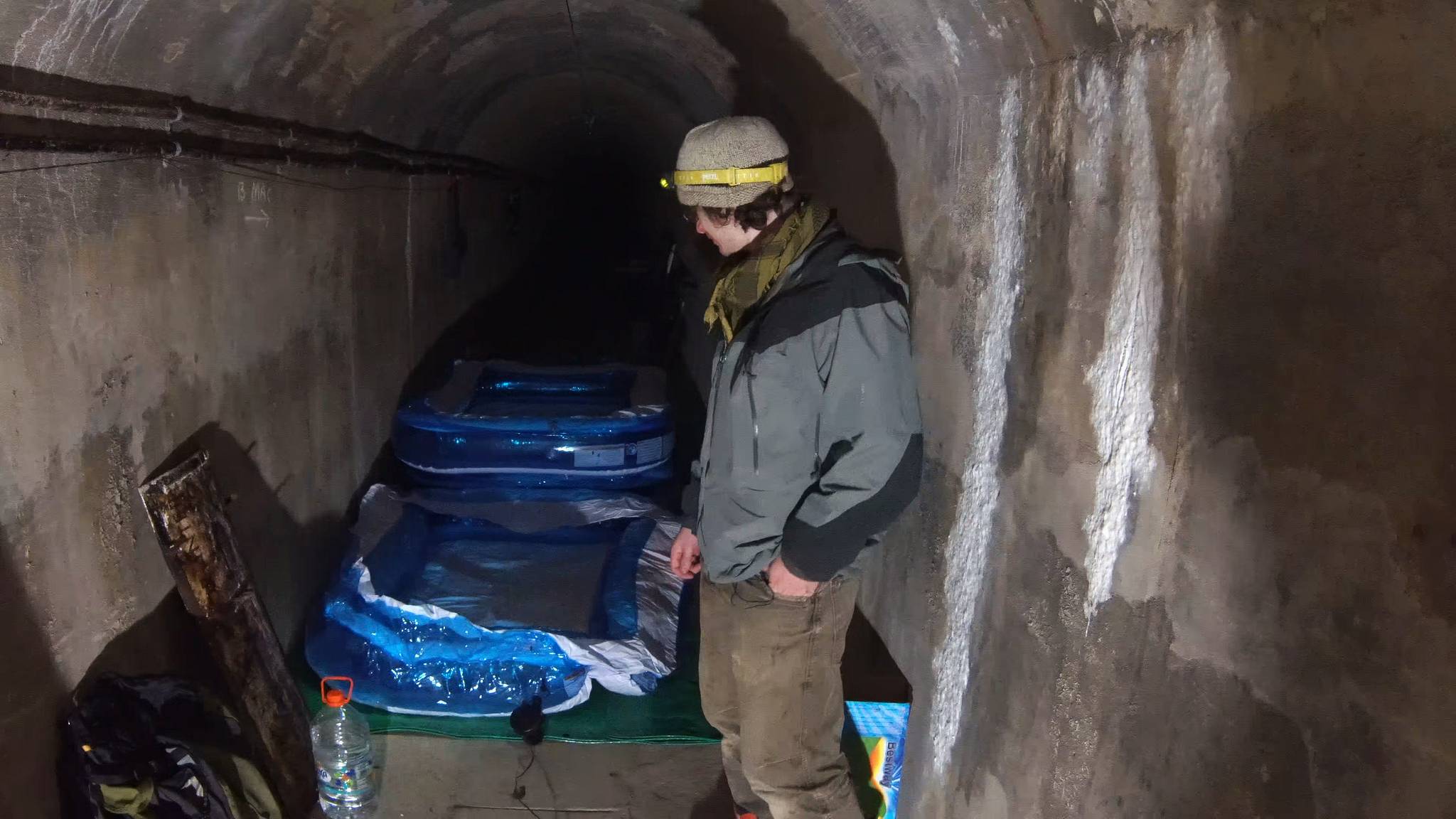Photography Underground — an Interview with Photographers Simon Riddell and David Allen of One Shot
2 12 Share TweetYes, you read that right — they did it all underground. Photographers Simon Riddell and David Allen are like crazy peas in an even crazier pod. The two artists share a lot of things in common aside from their love for analogue photography. Apparently, everything technical and challenging tickles their imagination. We were lucky enough to speak with the adventurous duo to talk about their work and their newest project called One Shot: Inchindown. It's a documentary filled with history, analogue photography, and a hint of madness among other things.

Hi, Simon and David! Welcome to the Lomography Magazine. What do you do and what made you want to take on this huge project?
David: Hi! So apart from being an analogue photographer, I work as a freelance graphic artist, web developer, and video producer. Simon, knowing my background with video, messaged me, drunk, one night and told me he thought we should make a documentary.
Simon: Honestly, this time I don’t think that I was actually drunk. Perhaps being full of toxic flu medication-induced creativity!
David: Whatever, the point is, Simon called me rambling about how he knew I could do all the hard work of editing a documentary.
Simon: Urgh! High-maintenance as usual! I was paying you compliments in terms of your amazing video skills etc. Erm, yeah. Let’s move on to me. I’ve had a variety of jobs, including being a firefighter and rope-access technician. Now, I mainly work as a fire risk consultant and as a photographer.
David: Simon and I both have a love for difficult adventures, originally becoming friends over not only our mutual love for film photography but also rock climbing. Having done adventure photography together in the past, we were looking for another crazy project.
Simon: I know for a fact that we both regularly reach a point where we have just ‘had enough’ of normal things. We feel the need to be out in sketchy weather or to participate in some kind of activity that pushes us out of our comfort zones. I guess we both need something to immerse and ground us.
You made a documentary about your One Shot: Inchindown project. What is it all about?
D: It’s about history, photography, darkroom printing, and Simon thinking a frittata is called an “omelet.” Am I missing anything, Si?
S: Listen, Dave. One last time. I’m calling it an omelet, I made it, it’s an omelet.
D: Anyway, we decided to lock ourselves into the underground oil storage facility; take only one shot of one of the tanks (on 4 × 5 film); and then create the world’s largest darkroom in the tunnels, to make a 120 cm fiber print of that one photo on location. To do this, we even slept overnight in the tunnels.

Why choose this subject to photograph?
S: Having been inside the oil reservoir facility once before, when Dave first visited Scotland, we both knew of its potential for a project.
D: Also, it’s sort of a crazy place that most people will never get to see in person, as it’s not open to the public. The fact that it is completely underground, with no light or electricity, means it piqued our interest in terms of a technical challenge.
S: We also wanted to bring Inchindown into the light as being such a crucial asset to the UK defenses in WWII. The facility ensured that the ship fleet could be fueled and therefore remain mobile. There are various video snippets online in terms of Inchindown, but nobody had filmed a comprehensive tour of the facility. We really wanted to ensure that people could see what a feat of engineering and construction Inchindown is, and we hope that the documentary will serve as a fantastic resource for people around the globe.
What were the challenges of undertaking such a colossal feat?
S: I’ve said it before, so let me re-iterate... Dave has ongoing high-maintenance issues. I bought him some sugary oats for breakfast in the tanks, this was a big mistake. We had spent about 20 hours in there, with little sleep (Dave slept well) I didn’t think he would be so lame... I was wrong.
D: I don’t like sugar. I don’t mind eating a frittata and having Simon call it an omelet, but that’s where I draw the line. Honestly, we sort of knew what to expect when taking the shot. The hard part was printing large fiber paper in a facility with no running water. Neither of us had printed that large before and we didn’t really know what to expect.
S: Also, the logistics of making the project happen were quite expansive. We had to problem solve a lot, even in the preparation stages. Lugging loads of equipment up there was physically tiring, the temperature inside the tunnels and tanks was just above freezing, we had to rig a generator and make everything safe, we had chemicals and fluids in close proximity to electrics, the safety and welfare issues were fairly wide-ranging, but thankfully due to our experiences and backgrounds we were able to assess everything and stay safe.
Funding for the project was also a stretch for us. We were partly funded by our GoFundMe page, and some assistance was given to us by the Cromarty Firth Port Authority. Even with that assistance, we didn’t cover all our costs.
D: Mainly the cost of time for me to EDIT EVERYTHING, while Simon sat back and sipped his Prosecco. Also, our camera guy bailed on us at the last minute. Filming everything by ourselves was difficult and stressful.
S: I gave Prosecco up bro, it’s too fizzy, innit? In truth, there’s no way you would have started editing if I didn’t come to France and kick your ass into shape! I still marvel at how much progress we made in that week though!
What you did was remarkable. Both from a logistical and technical standpoint. How did you come up with the idea of printing an image this huge?
D: Simon saw the announcement of the (then) soon-to-be-released Intrepid enlarger. He realized that that would allow us to make an on-location darkroom. Then the project evolved into us trying to make it as hard as possible; because, as it turns out, we’re photographic masochists.
S: We both like it hard (speaking in terms of challenges), the harder the better.
The intro has got to be one of the most adventurous things we've seen here as of late. How did you two thrillseekers find each other?
D: Simon bought a zine I made and we got talking about double exposures on Twitter. He happened to mention that he rock-climbed, a big hobby of mine.
S: I told him he should visit Scotland. I didn’t think he actually would, the nutter.
D: The day after I arrived, we put on harnesses, loaded our sacks with cameras, and started doing inadvisable things by the North Sea.
How did you prepare yourselves for the project? What does the One Shot project mean to you?
D: For a few months prior, we were on the phone regularly discussing logistics. Once Intrepid agreed to send us an enlarger, we knew we were good to move forward. For me, the project is a great testament to how well Simon and I work together, how we solve problems in tandem. It’s also a testament to what we can do with analogue photography with little resources, or in harsh environments. Quite a few darkroom “experts” told me that there was no way we could get a good fiber print that size in such conditions, especially considering the water situation.
Honestly, Simon is like a brother to me now, and the fact that we were able to do this together was an amazing experience.
S: Awwww. I share that with you, bro! I was going through some pretty tough times back then. Having the project to focus on was really helpful and the fact that it was so involved meant that I was able to really engage with it. I spent a lot of time thinking it all through if only I didn’t get sugary oats though!
The One Shot: Inchindown project means a lot to both of us. Increasingly I personally feel that I can breathe a little easier now we achieved something gnarly and fantastic, I can’t really put into words how I feel about dedicating the film to my late father, Keith Riddell. I guess throughout the entire project, I have been healing and moving forward. I can’t thank Dave enough for his understanding, help, and brotherhood with it all.

What can people expect from your documentary? When will it be available for viewing?
S: People can expect to be entertained with our antics for sure. They will be able to experience what it is truly like inside the facility, actually, that’s why we decided to shoot the film with task lighting only for the majority, we wanted people to share our adventure and experience the sensory deprivation it brought.
We did not set out to film an educational documentary in terms of darkroom printing or analogue photography, but hopefully, people will see that it is possible to build a perfectly good darkroom and print without having to spend lots of time and money doing it. We hope that people can appreciate what shooting film or alternative processes means to us both, and perhaps be inspired to follow us in that endeavor.

D: The plan is to release it on-demand the 15th of October. People can follow us on social media (Facebook, Twitter, Instagram) under the handle @tankymconeshot. That way you can keep up to date on when the official release is.
Until then, we have a few showings lined up. Hopefully, we’ll be adding more. You can find all of them on our website.
Do you have upcoming projects you would like to share or promote? Please share them with our readers.
D: We are hoping that people enjoy One Shot: Inchindown, and that will allow us to crowdfund similar future adventures! For now, you can find me everywhere under the handle @dbloomsday (including on Lomography) , and Simon under @srfilmphotography to keep up with our personal projects.
What would you say was the biggest takeaway from this collaboration?
S: We both often remark that we’re really happy with the film. It feels really organic and serves to prove that you can achieve a lot with a little if you’re willing to problem solve and keep pushing the boundaries.
D: While I have a background in video, I had never made a feature-length documentary before. This was shot, directed, produced, and edited entirely by Simon and me. I was excited and surprised with what we ended up with. I’m excited to see what we do next, and at the same time, I'm encouraged that the sky’s the limit.
Any last words for our readers?
S: Thanks for your interest in the project, we hope you like the film and please let us hear from you on social media, etc. Peace.
D: Push your medium. Enjoy the process. Collaborate if possible.
We would like to thank David and Simon for letting us feature their work in the Magazine. Follow their crazy adventures and alternative photography projects — David Allen and Simon Riddell on Instagram. You may check out the trailer of the documentary as well as the complete details and updates of the project at their website One Shot: Inchindown.
written by cheeo on 2019-11-01 #gear #people #places #videos #underground #tunnel #documentary #large-format-photography #artist-interview #one-shot #simon-riddell #david-allen #inchindown





























2 Comments